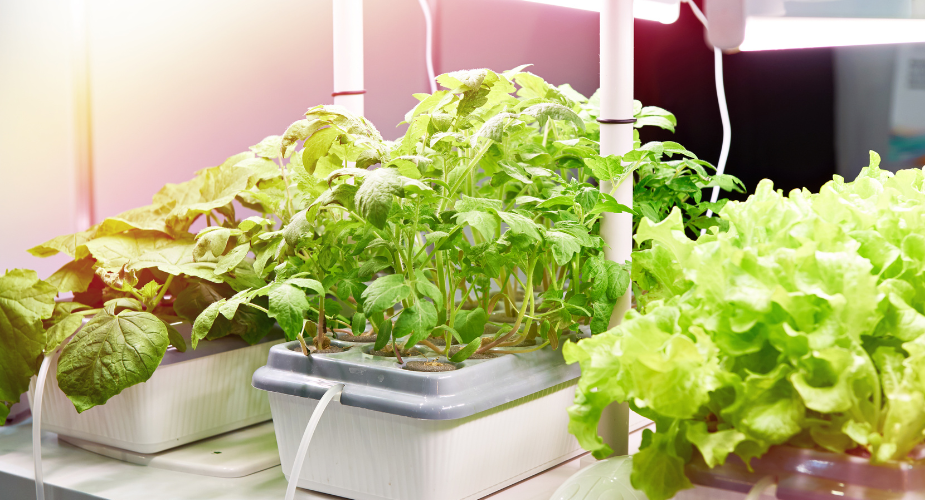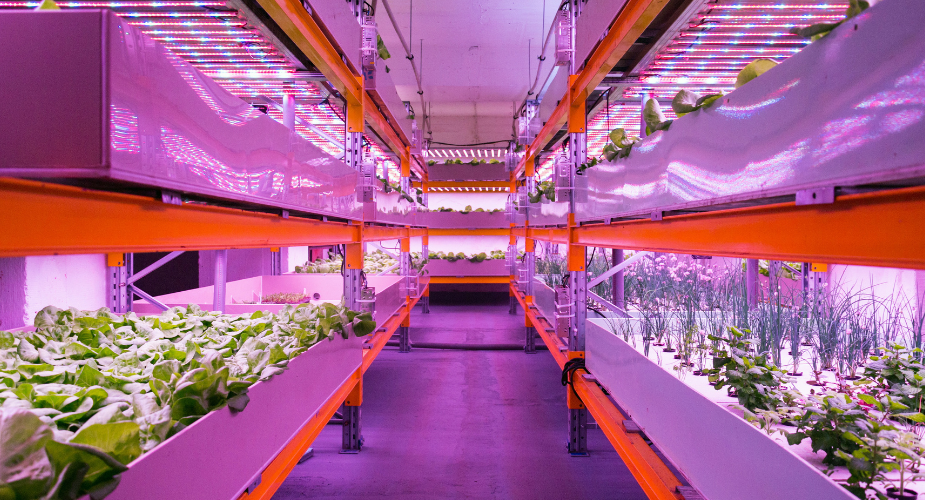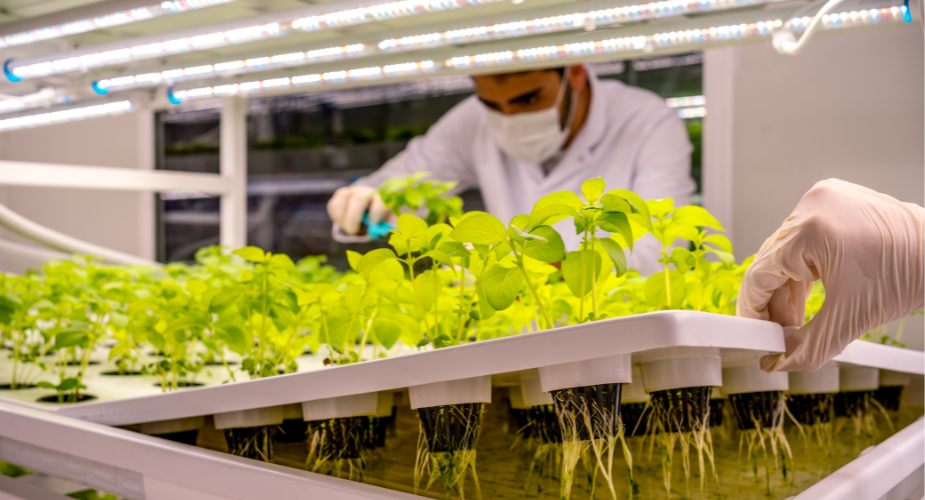Imagine growing fresh herbs, veggies, or flowers year-round—without soil! Welcome to the world of hydroponic gardening, a revolutionary way to cultivate plants faster, smarter, and with far less waste. Unlike traditional farming, hydroponics replaces soil with a nutrient-rich water solution, delivering everything plants need directly to their roots. The result? Lush, high-yielding crops in smaller spaces, using up to 90% less water than conventional methods. But the innovation doesn’t stop there. By pairing hydroponics with sustainable technology, you can create a self-sufficient, eco-friendly garden that thrives indoors or out. Ready to ditch the dirt and harvest fresher, faster? Let’s dive in.
Things to Know about Hydroponic Gardening Kits
- How Hydroponic Gardening DIY Works
- Essential Equipment for Hydroponic Gardening Kits
- Choosing the Best Plants for Hydroponic Gardening DIY
How Hydroponic Gardening DIY Works
At its core, hydroponic gardening bypasses soil entirely, delivering essential nutrients directly to plant roots through water. This precision feeding allows plants to grow faster and healthier by focusing their energy on foliage and fruit production rather than expanding root systems in search of nutrients.
6 Main Hydroponic Systems
Hydroponics isn’t a one-size-fits-all method—there are multiple systems to choose from, each with unique advantages:
- Deep Water Culture (DWC) – Plants float on a nutrient-rich water solution while air pumps oxygenate the roots. Simple and low-maintenance, ideal for beginners.
- Nutrient Film Technique (NFT) – A thin stream of nutrient water flows over bare roots in sloped channels, ensuring constant hydration and aeration.
- Ebb and Flow (Flood & Drain) – Periodically floods roots with nutrients before draining, mimicking natural wet-dry cycles. Great for larger plants.
- Aeroponics – Roots hang in the air and are misted with nutrient solution. Highly efficient but requires precise control.
- Wick System – Passive system where a wick draws nutrients from a reservoir to the roots. Best for small, low-maintenance plants like herbs.
- Drip System – The nutrient solution is dripped slowly onto the base of each plant. Highly customizable for different crops.
Key Components of a Hydroponic System
To build a successful hydroponic garden, you’ll need a few essential elements:
-
Growing Medium – Replaces soil, providing root support. Common options include:
- Clay pellets (lightweight and reusable)
- Rockwool (excellent water retention)
- Coconut coir (sustainable and pH-neutral)
- Nutrient Solution – A carefully balanced mix of nitrogen (N), phosphorus (P), and potassium (K), plus micronutrients like calcium and magnesium. Different growth stages (vegetative vs. flowering) require adjusted ratios.
-
pH & EC Meters – Since hydroponics relies on water chemistry, monitoring is crucial:
- pH levels (5.5–6.5 for most plants) affect nutrient absorption.
- Electrical Conductivity (EC) measures nutrient strength—too high can "burn" roots, too low starves plants.
Essential Equipment for Hydroponic Gardening Kits
A successful hydroponic garden relies on the right tools to create the perfect growing environment. Whether you're a beginner or an experienced grower, these must-have components will ensure your plants thrive without soil.
Must-Have Hydroponic Equipment
1. Grow Lights
Since hydroponics often takes place indoors or in low-light areas, proper lighting is critical for photosynthesis. The two most common options are:
- LED Grow Lights – Energy-efficient, long-lasting, and produce less heat. Look for full-spectrum LEDs with adjustable intensity.
- Fluorescent Lights (T5/T8) – Affordable and effective for seedlings and leafy greens, but less powerful for fruiting plants.
- Wattage Tip: Aim for 30-50 watts per square foot for optimal growth.
2. Water Pumps & Air Stones
- Water Pumps – Circulate nutrient solutions in systems like DWC, NFT, or Ebb and Flow. Choose a submersible pump with adjustable flow rates.
- Air Stones & Pumps – Oxygenate the water to prevent root rot. A quiet, reliable air pump ensures healthy roots.
3. Grow Trays & Reservoirs
- Grow Trays – Hold plants and growing medium.
- Reservoirs – Store nutrient-rich water; should be lightproof to prevent algae growth.
Optional Equipment
1. Timers for Lights & Pumps
Automate your system with digital timers to:
- Maintain consistent light cycles (e.g., 16 hours on/8 hours off for greens).
- Schedule pump intervals (for Ebb & Flow systems).
2. Solar Generators for Off-Grid Hydroponics
For hydroponic gardening growers looking to reduce energy costs or operate completely off-grid, a solar generator is a game-changer. The Nature’s Generator Elite - Gold System is an excellent choice for hydroponic setups, offering:
- High Capacity (7200Wh) – Powers grow lights, pumps, and fans for extended periods.
- Expandable Solar Input (2400W max) – Connects to multiple solar panels for faster recharging.
- Pure Sine Wave Output – Safe for sensitive electronics like LED lights and digital timers.
- 24/7 Power Supply – Works as a solar battery backup, ensuring no interruptions in your hydroponic system.
- Quiet & Emission-Free – Unlike gas generators, it runs silently without fumes—perfect for indoor gardens.
Choosing the Best Plants for Hydroponic Gardening DIY
One of hydroponics' greatest advantages is the ability to grow fresh produce year-round, but not all plants thrive equally in soil-free systems. Whether you're a beginner or an experienced grower, selecting the right crops will maximize your success.
Best Hydroponic Gardening Plants for Beginners
These forgiving, fast-growing plants are perfect for your first hydroponic setup:
1. Leafy Greens
- Lettuce (Butterhead, Romaine) - grows rapidly, ready in 30 days
- Kale & Spinach - nutrient-dense and cold-tolerant
- Swiss Chard - colorful and continuous harvest
2. Fresh Herbs
- Basil - thrives in warm conditions
- Mint - grows aggressively (best in separate system)
- Cilantro & Parsley - perfect for kitchen gardens
3. Compact Vegetables
- Cherry Tomatoes (bush varieties) - requires support but rewards with heavy yields
- Bell Peppers - does well in drip or Dutch bucket systems
- Bush Beans - fast producers with minimal space needs
Challenging Plants for Hydroponics
While hydroponics can grow almost anything, these plants present difficulties:
1. Large Root Crops
- Potatoes, carrots, and radishes need deep soil space for proper development
- Possible but requires specialized deep-flow systems
2. Space-Hungry Fruits
- Watermelons, pumpkins, and corn demand too much space
- Can be attempted by experienced growers with large setups
3. Perennial Plants
- Blueberries and fruit trees need dormancy periods
- Not impossible but requires advanced climate control
Pro Tips for Plant Selection
- Start with quick-growing varieties to see fast results
- Match plants with your system type (leafy greens do great in NFT, tomatoes prefer drip)
- Consider your climate - tropical plants thrive in warm indoor setups
Conclusion
Hydroponic gardening isn’t just a trend, it’s a smarter, more sustainable way to grow fresh produce year-round, regardless of space or climate. By eliminating soil, you unlock faster growth, higher yields, and incredible water efficiency, all while enjoying the satisfaction of cultivating your own food. And with innovations like Nature's Generator Elite - Gold System, hydroponics becomes even more accessible and eco-friendly. Imagine harvesting sun-ripened strawberries in winter or picking fresh basil for dinner—all grown sustainably, without pesticides or excessive water waste.













